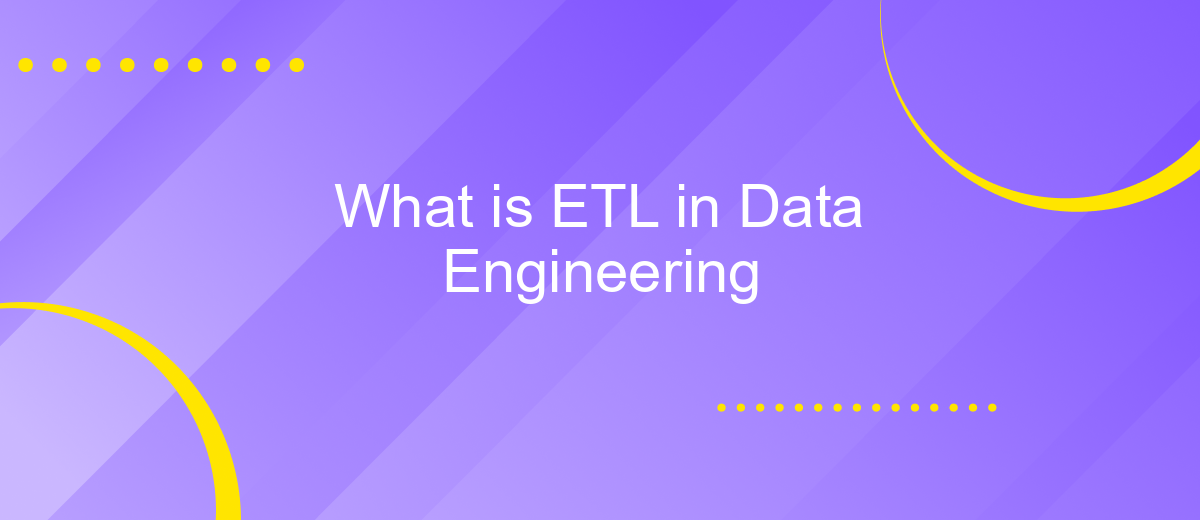What is ETL in Data Engineering
ETL, which stands for Extract, Transform, Load, is a fundamental process in data engineering. It involves extracting data from various sources, transforming it into a suitable format, and loading it into a data warehouse or other storage systems. This process is crucial for ensuring data is clean, reliable, and easily accessible for analysis and decision-making.
Introduction
ETL, which stands for Extract, Transform, Load, is a crucial process in data engineering that involves extracting data from various sources, transforming it into a suitable format, and loading it into a destination system for analysis and reporting. This process is fundamental for organizations to make data-driven decisions and maintain data quality.
- Extract: Gathering data from different sources such as databases, APIs, and flat files.
- Transform: Cleaning, formatting, and enriching the data to meet business requirements.
- Load: Inserting the transformed data into a target database or data warehouse.
Modern ETL tools and services, like ApiX-Drive, simplify the integration process by automating data extraction and transformation tasks. ApiX-Drive offers seamless connectivity with numerous applications and platforms, enabling businesses to streamline their data workflows and ensure that accurate and up-to-date information is readily available for analysis. This not only saves time but also reduces the risk of errors, making ETL an essential component of any robust data strategy.
Definition of ETL

ETL, which stands for Extract, Transform, Load, is a fundamental process in data engineering that involves the extraction of data from various sources, its transformation into a suitable format, and its loading into a destination system for analysis or further use. This process is crucial for consolidating data from disparate sources, ensuring consistency, and preparing it for meaningful insights and decision-making. Each step in the ETL process plays a critical role: extraction involves retrieving raw data, transformation entails cleaning and structuring the data, and loading transfers the processed data into a data warehouse or other storage solutions.
Modern data engineering often leverages advanced tools and services to streamline the ETL process. One such service is ApiX-Drive, which facilitates the integration of various applications and automates data workflows. By using ApiX-Drive, organizations can efficiently manage their data pipelines, reduce manual intervention, and ensure that data is consistently up-to-date and accurate. This automation not only saves time but also minimizes errors, allowing data engineers to focus on more strategic tasks.
ETL Process

The ETL (Extract, Transform, Load) process is a critical component in data engineering, enabling organizations to collect data from various sources, transform it into a suitable format, and load it into a target system for analysis and reporting. This process ensures that data is accurate, consistent, and ready for use in decision-making.
- Extract: In this initial phase, data is extracted from multiple sources such as databases, APIs, and flat files. Tools like ApiX-Drive can simplify this step by automating data extraction from various applications and services.
- Transform: The extracted data is then cleaned, enriched, and transformed into a desired format. This may involve data cleansing, normalization, aggregation, and other transformations to ensure data quality and consistency.
- Load: Finally, the transformed data is loaded into a target data warehouse, database, or data lake. This step ensures that the data is available for querying, analysis, and business intelligence activities.
By leveraging the ETL process, organizations can efficiently manage their data workflows and ensure that they have access to high-quality, actionable insights. Tools like ApiX-Drive facilitate seamless integration and automation, making the ETL process more efficient and reliable.
Benefits of ETL

ETL (Extract, Transform, Load) processes play a crucial role in data engineering by enabling the efficient handling and manipulation of data. These processes help organizations in converting raw data into meaningful insights, which can be used for decision-making and strategic planning.
One of the primary benefits of ETL is the ability to consolidate data from multiple sources into a single, unified view. This ensures data consistency and accuracy, which are essential for reliable analytics. Additionally, ETL processes can automate repetitive tasks, saving time and reducing the risk of human error.
- Improved data quality and consistency
- Time and cost efficiency through automation
- Enhanced decision-making capabilities
- Scalability to handle large volumes of data
Services like ApiX-Drive can further streamline ETL processes by providing easy-to-use tools for setting up integrations and automating data flows. By leveraging such services, organizations can quickly adapt to changing data requirements and maintain a robust data infrastructure.


Conclusion
In conclusion, ETL (Extract, Transform, Load) is a cornerstone of data engineering that enables organizations to efficiently manage and utilize their data. By extracting data from various sources, transforming it into a suitable format, and loading it into a data warehouse, ETL processes ensure that data is accurate, consistent, and accessible for analysis and decision-making. This systematic approach not only enhances data quality but also supports business intelligence and strategic planning.
Moreover, integrating ETL processes with modern tools and services like ApiX-Drive can significantly streamline data workflows. ApiX-Drive offers seamless integration capabilities, automating the data extraction and transformation stages, and ensuring that data is promptly loaded into the desired systems. This not only reduces manual effort but also minimizes the risk of errors, thereby optimizing the overall efficiency of data operations. As data continues to grow in volume and complexity, leveraging robust ETL solutions and integration services will be crucial for maintaining a competitive edge in today's data-driven landscape.
FAQ
What is ETL in Data Engineering?
Why is ETL important?
What are the common tools used for ETL?
Can ETL processes be automated?
What are the challenges associated with ETL?
Apix-Drive will help optimize business processes, save you from a lot of routine tasks and unnecessary costs for automation, attracting additional specialists. Try setting up a free test connection with ApiX-Drive and see for yourself. Now you have to think about where to invest the freed time and money!

